The countries that really produce the most oil
Which nation produces the most oil?
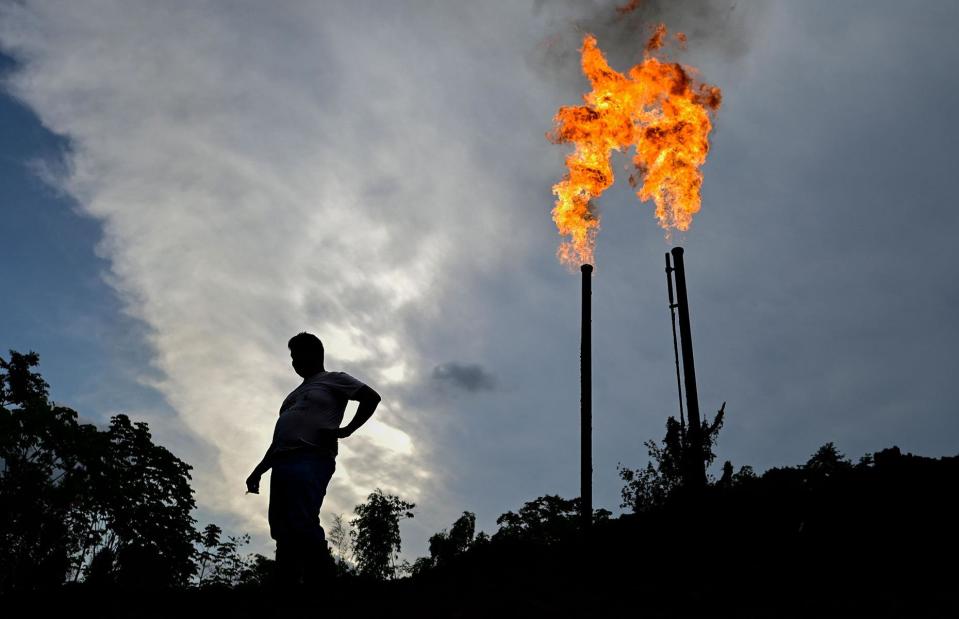
PEDRO PARDO/AFP via Getty Images
From the COVID-19 pandemic to Russia's war against Ukraine, a number of global crises have shaken the oil industry to its core over the last few years – and shown just how reliant we are on fossil fuels.
While much of the world is trying to cut back on oil in a bid to reduce carbon emissions, we still pumped out almost 90 million barrels of the black stuff every day in 2022. But which country produces the most?
Read on to discover the 30 nations churning out the most black gold today based on the latest data (2022) from the Energy Institute's Statistical Review of World Energy report.
All dollar amounts in US dollars.
30. Australia: 420,000 barrels per day
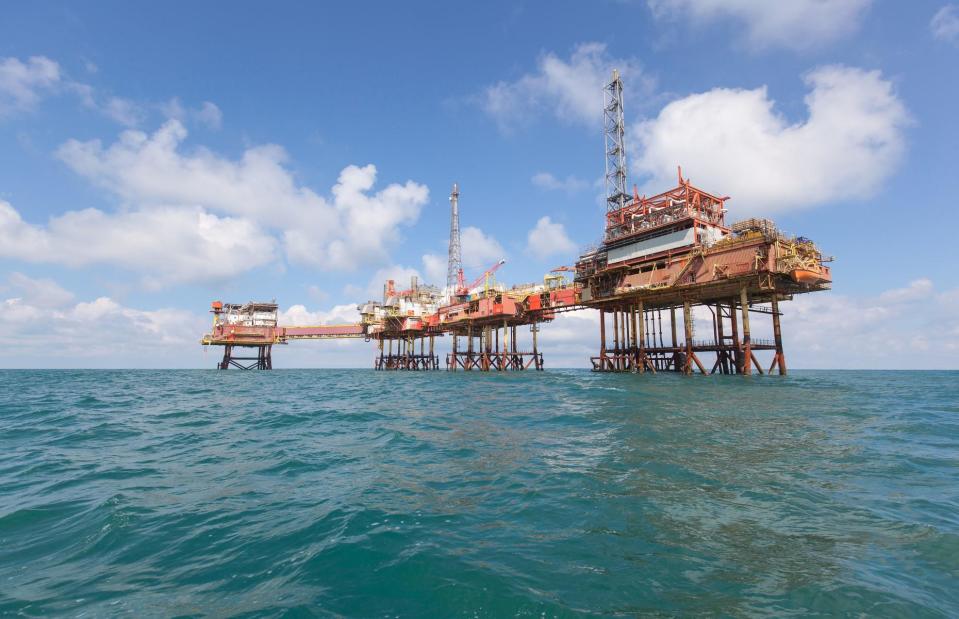
Lukasz Z/Shutterstock
With around 0.3% of the world's oil reserves, Australia might not be famed for its supply of "black gold" – but the land Down Under secures 30th place in our rankings with a daily production of 420,000 barrels in 2022. That's a slight decrease from 435,000 barrels a day in 2021, itself a decrease from over 450,000 barrels in both 2019 and 2020.
In 2022, the Australian government faced calls to inaugurate new oil and gas fields in the country, despite warnings from the International Energy Agency (IEA) that new fossil fuel projects will make it impossible for the world to hit urgent climate targets. Officials have claimed that increasing Australia's oil production is "absolutely part of the solution" to reaching net zero, according to The Guardian.
29. Ecuador: 481,000 barrels per day
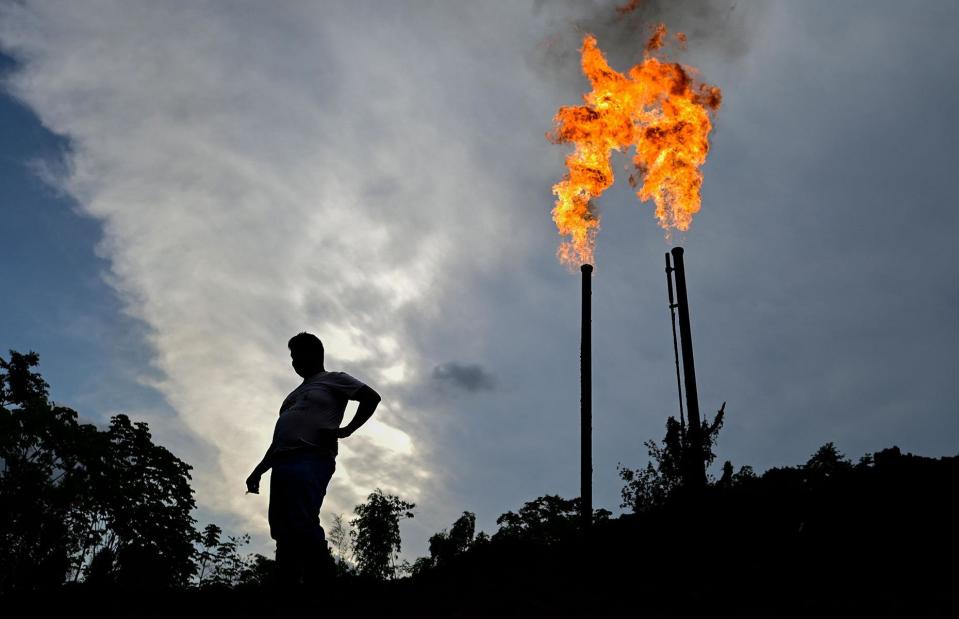
PEDRO PARDO/AFP via Getty Images
In line with fellow members of OPEC, Ecuador cut its oil production at the end of 2016 to help boost demand and raise global prices. As a result, the daily number of barrels produced by the nation fell from 548,000 in 2016 to 531,000 in 2019.
Ecuador went on to suspend its OPEC membership in January 2020, and so wasn't pressured to further cut its production to help stabilise prices during the pandemic. Later that year, however, the country suffered two broken pipelines as a result of landslides, causing dangerous oil spills in local indigenous communities and bringing a halt to exports.
In July 2021, extensive work was carried out to carve a new route for a pipeline in a bid to avoid further oil loss and prevent damage to the local area. As a result, Ecuador's daily oil production saw a relatively small decrease from 479,000 to 473,000 million barrels a day between 2020 and 2021, with this number increasing again to 481,000 in 2022.
28. Malaysia: 567,000 barrels per day
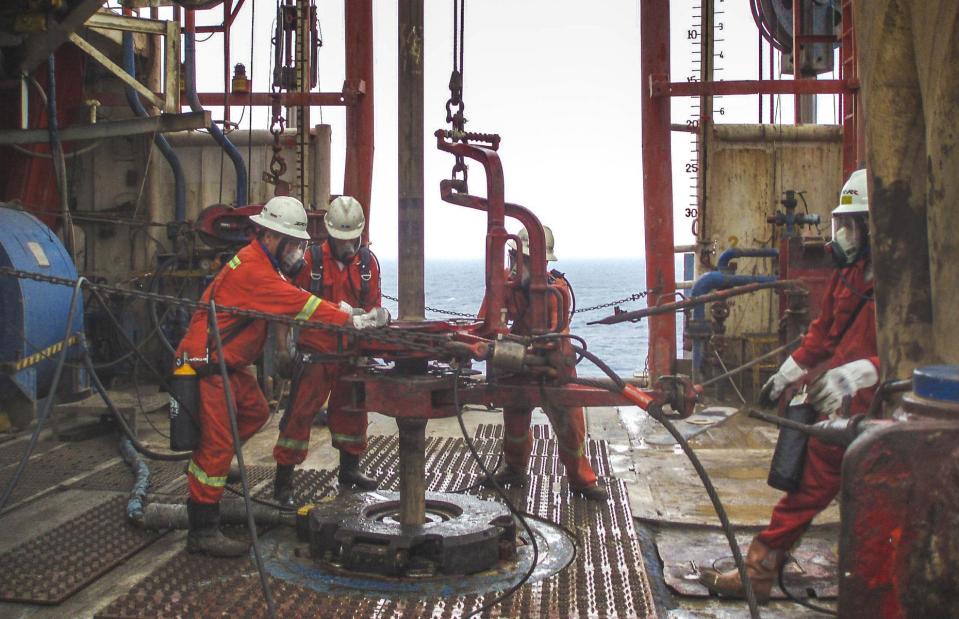
AzmanMD/Shutterstock
One of the largest oil producers in Southeast Asia, Malaysia's daily output in 2020 was 616,000 barrels. This marked a drop from 672,000 barrels the previous year, 573,000 in 2021, and 567,000 in 2022.
In 2016, the country teamed up with other OPEC countries to cut its production levels to stabilise the global oil price and did the same in 2020 in response to the pandemic.
Several major oil projects have been under development in deep-water areas in eastern Malaysia. These include Shell's Malikai development, which is a huge contributor to the country's total output thanks to its annual peak production of 60,000 barrels per day.
27. Egypt: 613,000 barrels per day
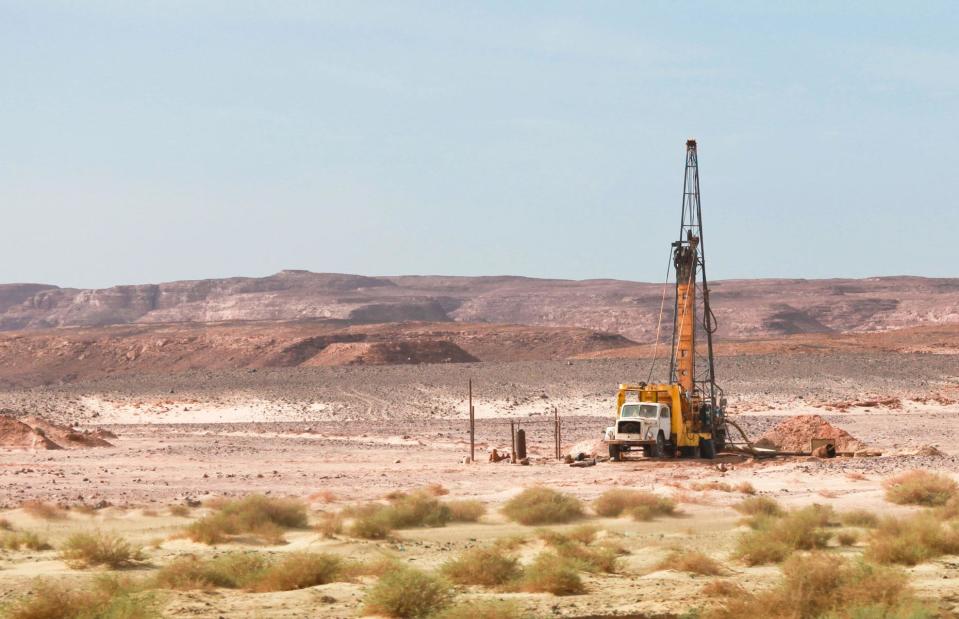
Paul Prescott/Shutterstock
Producing 653,000 barrels a day in 2019, Egypt actually churned out 21,000 more barrels each day in 2018. These volumes are considerably less than the 726,000 barrels that the country was churning out daily in 2015.
Egypt's total daily figure fell to 632,000 barrels in 2020 due to the COVID-induced global slump, and dipped again to 608,000 in 2021.
That said, Egypt is a net importer of oil, which means the country hasn't felt the effects of the oil price nosedive as harshly as others. And unlike some countries on this list, its oil production increased slightly to 613,000 barrels in 2022 and could rally still further; last year BP launched a new oil and gas project in the country, with work commencing in October.
26. Indonesia: 644,000 barrels per day
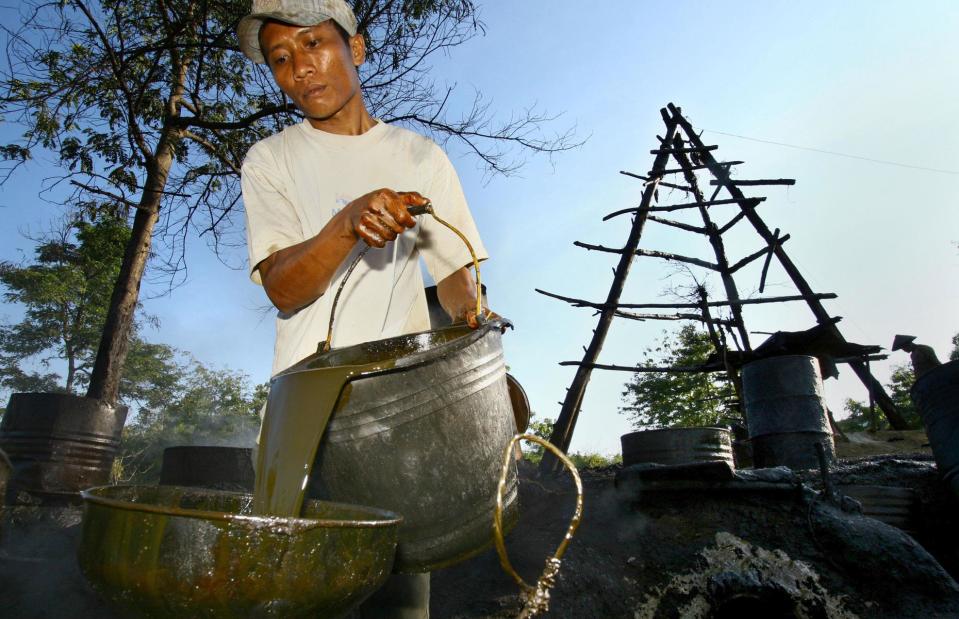
AFP/Getty Images
Indonesia suspended its membership of OPEC at the end of 2016 to avoid adhering to the organisation's hefty production cut.
After a moderate slowdown in output due to a lack of investment in 2017, the Southeast Asian nation increased its production to 808,000 barrels a day in 2018.
In a bid to mitigate the damage caused by COVID-19, Indonesian oil and gas regulator SKK Migas introduced incentives to entice investment into the sector. This didn’t prevent production from sliding though, and in 2020 the country churned out 742,000 barrels each day. This number dropped again in 2021, falling to just 692,000, before dwindling by a further 6.9% to 644,000 in 2022.
25. Azerbaijan: 685,000 barrels per day
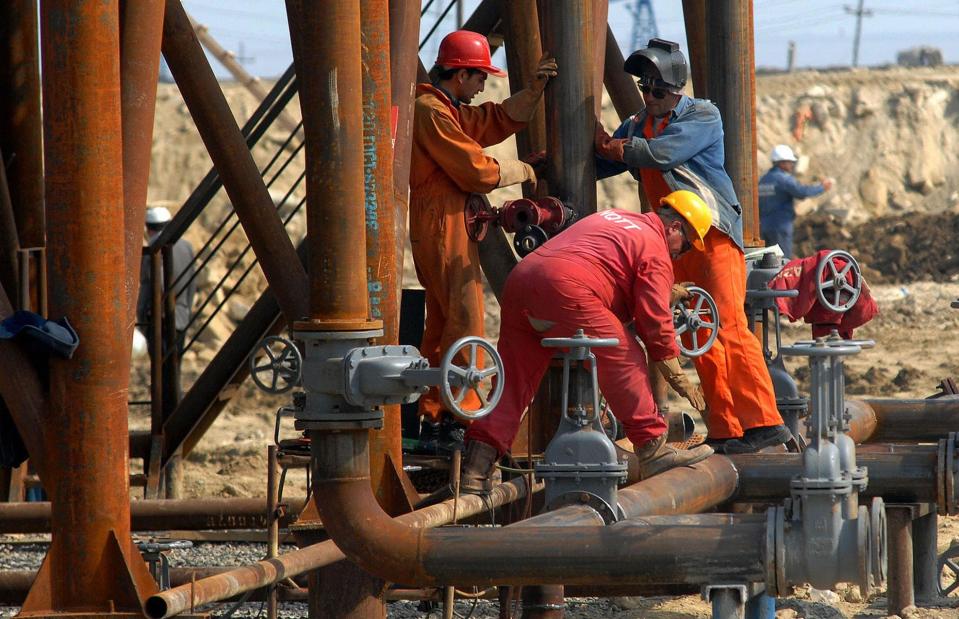
AFP/Getty Images
Like Malaysia, Azerbaijan signed up to the OPEC deal in December 2016 and slashed production of its oil, which is mainly sourced offshore in the Caspian Sea.
In 2020, Azerbaijani oil fields extracted 716,000 barrels of the commodity a day, marking a reduction of 7.6% from 2019. The figure picked up in 2021, hitting 722,000 barrels a day, but slipped to under 700,000 in 2022 for the first time since 2006. This was partially due to disruption to the country's oil fields in the Caspian Sea after flow through the Baku-Supsa pipeline was halted in the wake of Russia's invasion of Ukraine.
Figures from the Azerbaijani government suggest its oil production in 2026 will be 3% lower than the projections for 2023, signalling rates are likely to drop further.
24. Argentina: 706,000 barrels per day
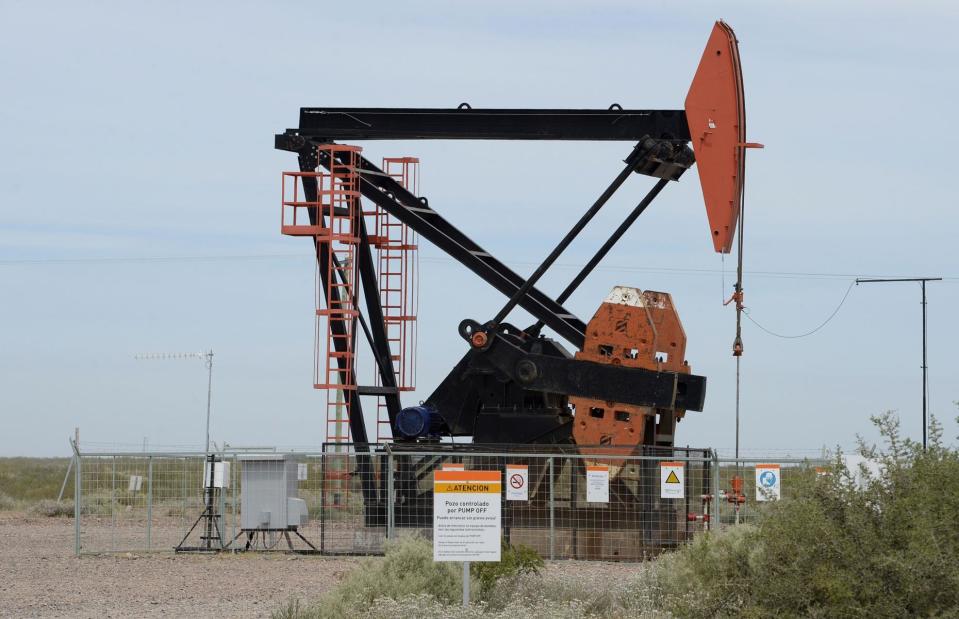
Juan Mabromata/AFP/Getty Images
Oil production in Argentina increased from 628,000 to 706,000 barrels a day between 2021 and 2022.
Before the COVID-19 outbreak, the South American country was slowly starting to see a boom in oil drilling, but production dipped to 601,000 in 2020.
Despite its rallying oil production figures, Argentina is increasingly turning to its gas reserves to tackle its economic problems. Its natural gas production could rise from four billion cubic feet a day to 5.4 billion cubic feet within the next few years, according to McKinsey, and in July 2023 the nation inaugurated a new oil and gas pipeline to carry resources from the Vaca Muerta ("Dead Cow") field.
23. Venezuela: 731,000 barrels per day
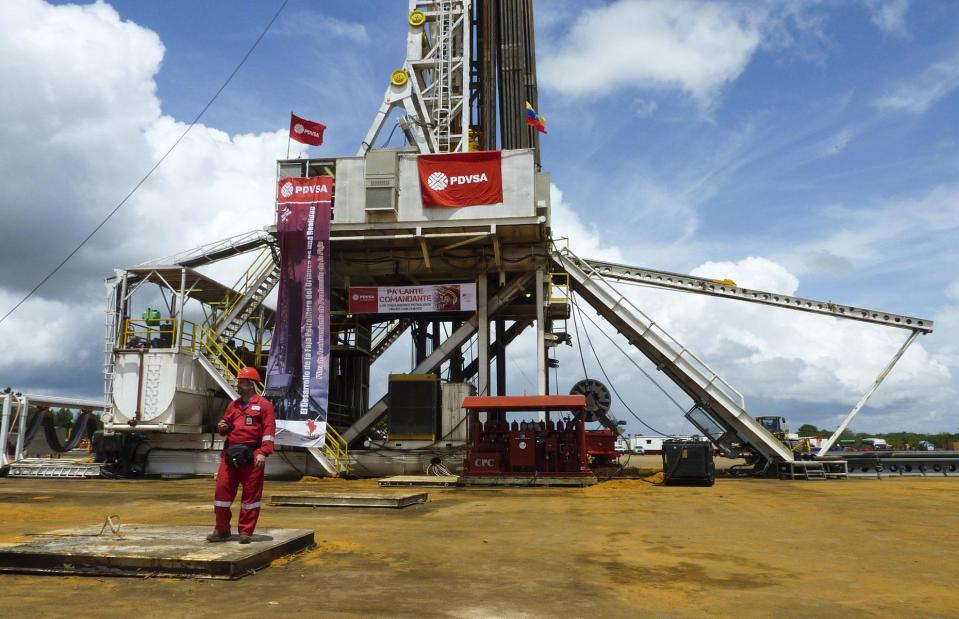
AFP/Getty Images
Despite sitting on the world's richest reserves of oil, with more than 300 billion barrels to its name, Venezuela’s oil production fell dramatically between 2019 and 2020 due to severe economic and political crises in the country.
In 2020, Venezuela’s year-on-year daily production was down by more than 40%. That marked a whopping 80% drop from the glory days of 2010, when it produced more than 2.8 million barrels a day. August of that year saw Venezuela’s crude oil production fall to its lowest level since US Energy Information Administration (EIA) records began in 1973.
But the numbers picked up again. A daily output of 654,000 barrels per day in 2021 saw the country rise from 27th to 24th spot in the global rankings, overtaking the likes of Malaysia, Egypt, and Argentina in the process. In 2022 this number jumped to 731,000 barrels a day, meaning the country has risen one more spot.
22. India: 737,000 barrels per day
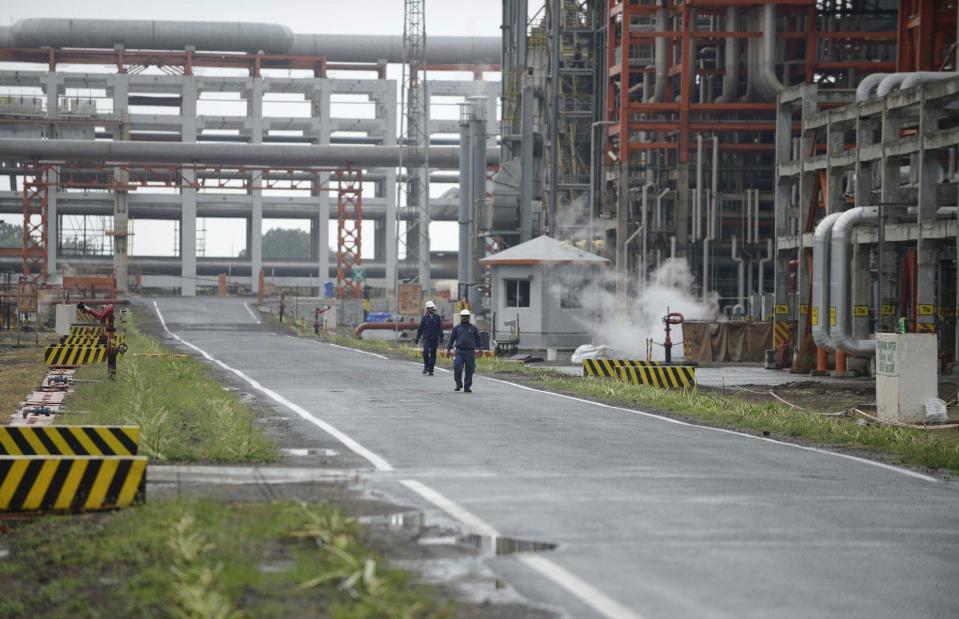
Sam Panthaky/Getty Images
India may import the bulk of the oil it consumes, but its oil wells still produce considerable quantities of the black stuff.
In 2019, India churned out 830,000 barrels of oil a day – its lowest production rate in a decade – and, unsurprisingly, that figure fell during the coronavirus pandemic. India was producing 771,000 barrels each day in 2020, with the total dropping further to 746,000 in 2021 and 737,000 in 2022.
This could explain why the country has been buying record amounts of oil from Russia, snapping up the excess as most Western nations turn their back on the Federation.
21. Colombia: 754,000 barrels per day
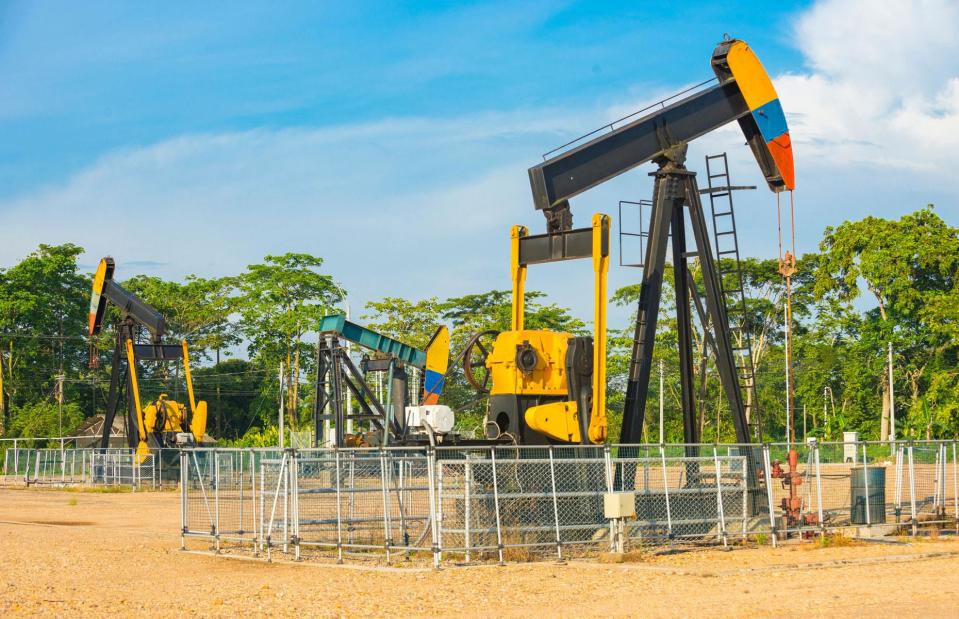
Javier Crespo/Shutterstock
A series of militant attacks, including several bombings on the Bicentenario and the Caño Limón pipelines, has disrupted oil production in Colombia in recent years.
Despite the unrest, Colombia pumped out 886,000 barrels of oil a day in 2019, the highest amount the country has produced since 2016.
Oil production fell to 781,000 barrels per day in 2020, plummeting by another 43,000 barrels in 2021. Although numbers rallied in 2022 to 754,000 barrels a day, production hasn't recovered to pre-pandemic levels, suggesting the combination of civil tension and COVID-19 has cast a long shadow.
20. United Kingdom: 778,000 barrels per day
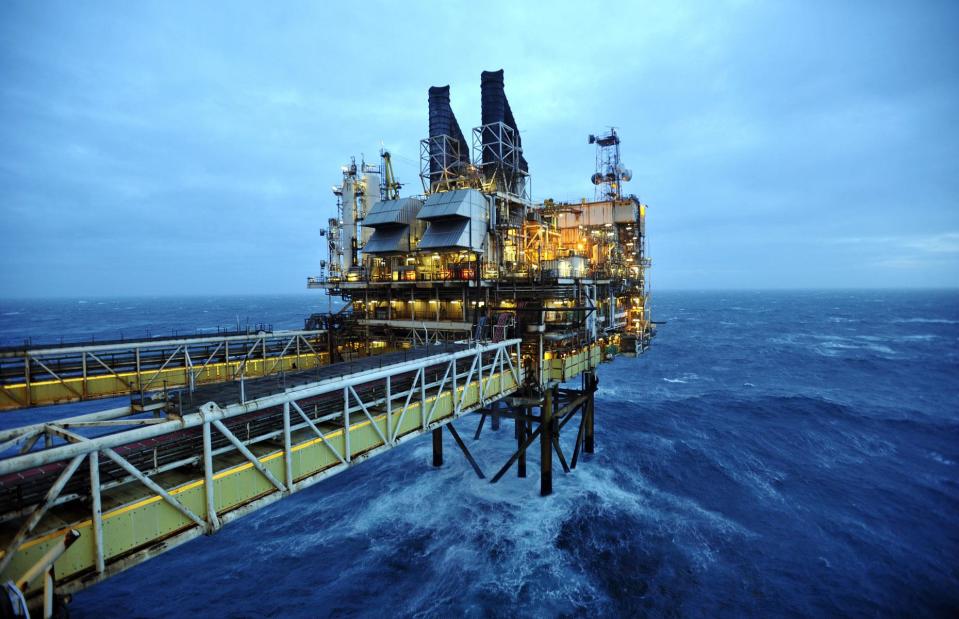
WPA Pool/Getty Images
In 1984, the UK was the world's fifth leading oil-producing country. By 1999, the nation's North Sea oil rigs were delivering almost three million barrels of oil a day.
Since then, reserves have declined considerably, and in 2019 the total was 1.118 million a day. The pandemic prompted further shrinkage in the country’s oil industry, and the UK produced 1.029 million barrels a day in 2020. In 2021, its daily oil production fell below one million barrels for the first time since 2015, dipping down to 874,000. The following year, this number fell to 778,000.
This has resulted in a drop from 18th to 19th place in the global rankings.
19. Oman: 1.064 million barrels per day
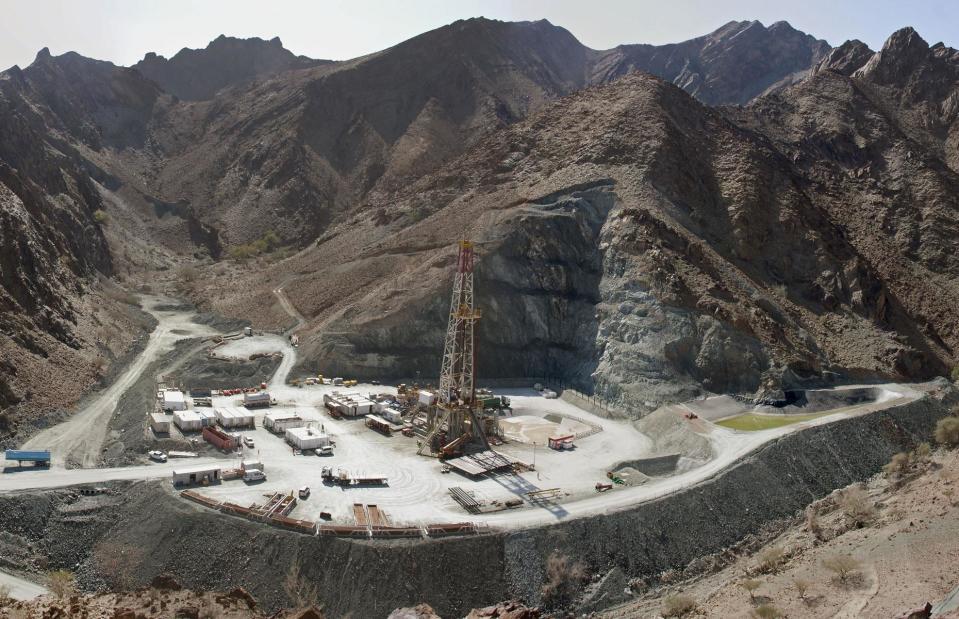
Zotyesz/Shutterstock
Despite not being a member of OPEC, Oman agreed to reduce its oil production in 2016. In 2017, its daily rate fell to 971,000 barrels from a peak output of 1.04 million the previous year.
In 2018, production was up by 7,000 more barrels a day, although this dropped back down to 971,000 barrels a day in 2019.
Like most oil-producing nations, Oman’s future in the industry was hit by the pandemic. As the price of oil was sent into turmoil, the nation's production rate slipped to 951,000 barrels per day in 2020. The country has since managed to increase this number to 1.064 million barrels per day in 2022, the first time Oman has surpassed a daily total of one million barrels since 2016.
18. Libya: 1.088 million barrels per day
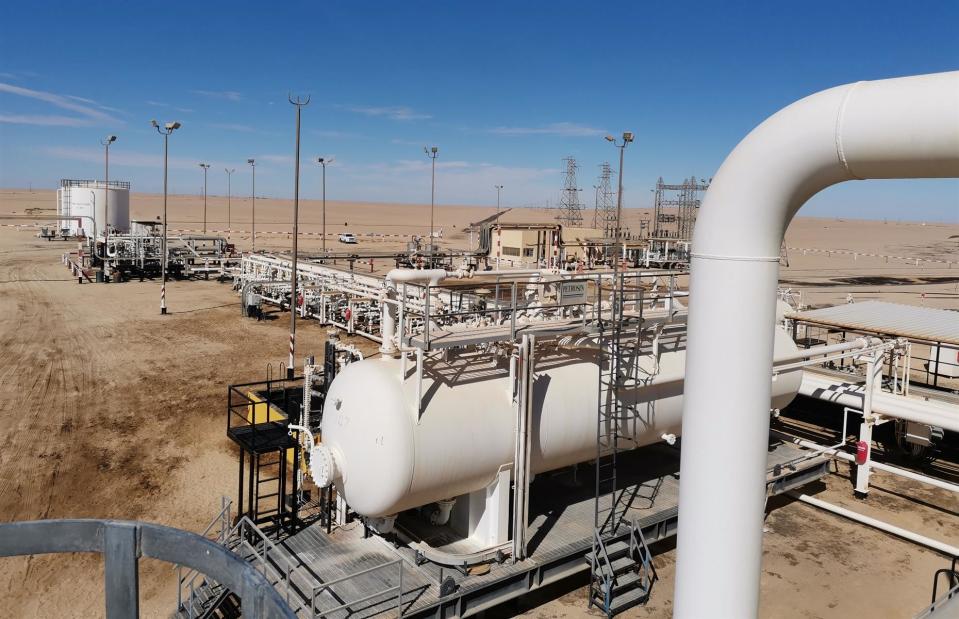
Said Zr/Shutterstock
The 16th largest country in the world and the 18th largest oil producer, Libya produced 1.088 million barrels of black gold per day in 2022. This was a decrease of 14.3% from 2021, when the African nation was producing 1.269 million barrels a day.
According to the latest data, Libya's oil production has fluctuated wildly over the last six years, with lows of 412,000 barrels a day and highs of over 1.2 million. But a 2022 report in CNN Business included a warning from Richard Norland, US ambassador to Libya, that the country's oil ministry has historically misrepresented its oil production figures and that "actual production is significantly higher".
17. Angola: 1.190 million barrels a day
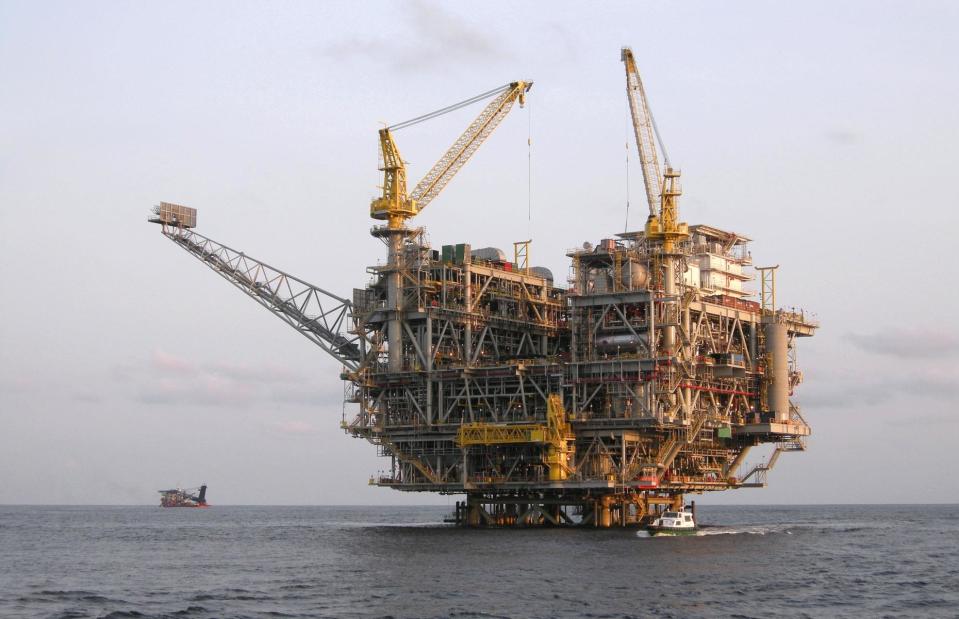
Christopher Poe/Shutterstock
In keeping with other OPEC countries, Angola cut oil production to help end the glut of the commodity and stimulate prices. As a result, the number of barrels it produced per day in 2019 was almost 20% less than before the deal in 2016.
As turbulence hit the industry due to the pandemic, Angola produced a surplus of oil in 2020. Although initially resistant to reducing production to compensate for the overproduction earlier in the year, pressure from OPEC prompted the nation to agree to lower its production rates in the latter half of 2020.
In total, Angola produced 1.324 million barrels daily, a drop of around 200,000 from 2019. In 2021, this number fell again to 1.164 million barrels per day, marking a further decrease of 160,000 barrels. In 2022 it rose to 1.190 million barrels, but the country is reportedly looking to invest more in hydropower and solar energy to reduce its reliance on its dwindling oil production.
16. Nigeria: 1.450 million barrels per day
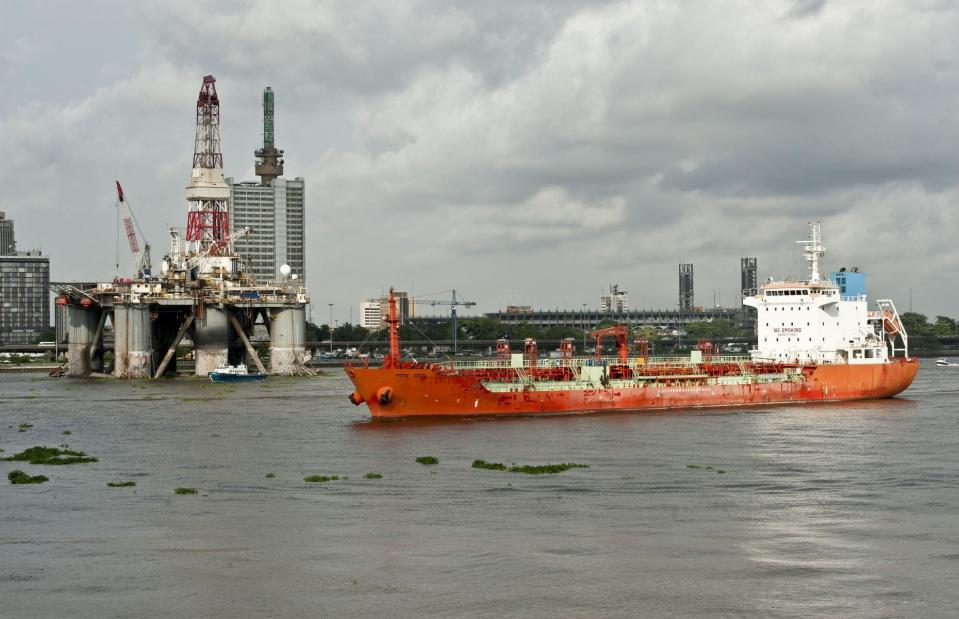
vanhurck/Shutterstock
Nigeria was exempted from the cuts OPEC imposed on other countries in order to allow it to recover from the disruption caused by the Boko Haram insurgency.
However, the country still agreed to cut its output in September 2019, with its oil production falling from 2.101 million barrels a day to 1.828 million barrels between 2019 and 2020.
After 13 years of deliberation, Nigerian lawmakers passed the Petroleum Industry Bill on 1 July 2021. The bill aimed to end foreign exploitation of the country’s resources and end the regulatory uncertainty that had often discouraged investors in the past. In the same year, its daily production averaged 1.626 million barrels per day, but this dropped to 1.450 million barrels in 2022.
15. Algeria: 1.474 million barrels per day
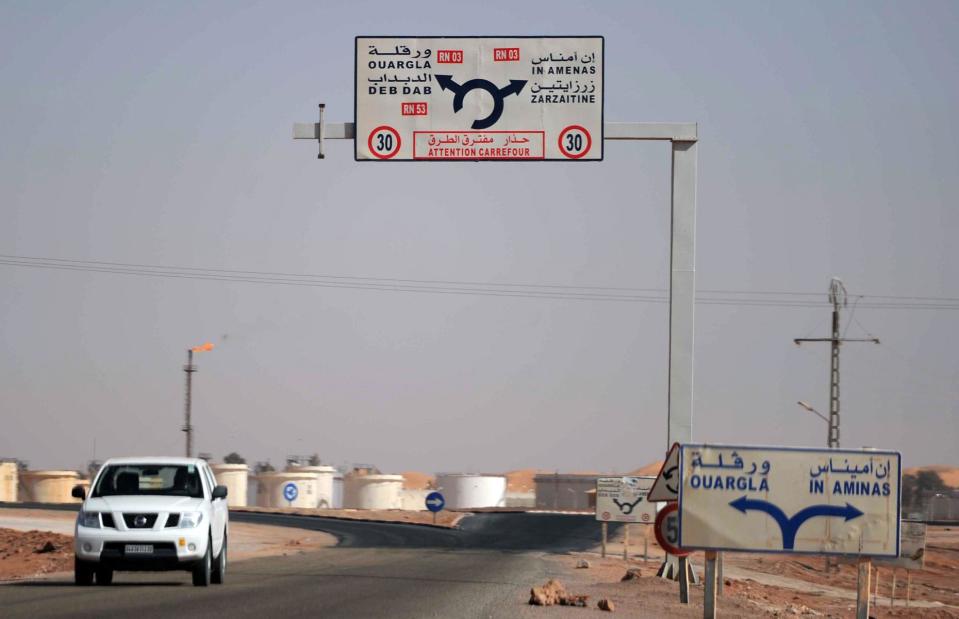
AFP/Getty Images
It's a similar story in Algeria, which has also limited production due to the OPEC agreement.
The daily total of barrels produced in 2019 was 1.511 million, down from the 1.689 million it pumped out daily in 2010.
Tumbling oil prices played a large part in the Algerian government’s decision to slash its state budget in half in July 2021, as the oil-dependent nation tried to navigate the difficulties caused by the pandemic. However, the nation's oil production rallied to 1.474 million barrels in 2022. This could partially explain the new government's move to up its state budget to $98 billion (£76.7bn) in 2023, the biggest in its history.
14. Qatar: 1.768 million barrels per day
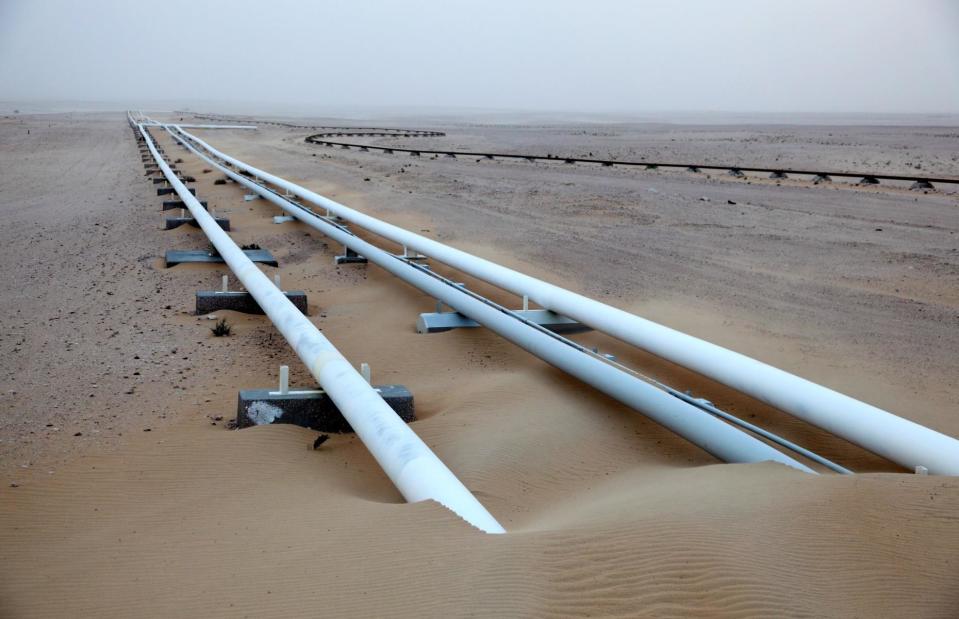
Philip Lange/Shutterstock
Former OPEC member Qatar announced it was leaving the organisation in 2018, allowing it to focus on gas rather than oil production.
Despite a spectacular disagreement with its fellow Gulf-based OPEC members in 2016, the nation stuck to the agreement of cutting oil production until the end of 2018. This trend continued, and in 2019, Qatar produced 1.727 million barrels of oil a day, a fall from 1.793 million the year before.
Due to the pandemic, production levels dipped to 1.714 million barrels per day in 2020. This was followed by a small recovery in 2021, with daily production averaging at 1.746 million barrels per day, and another boost to 1.768 million barrels in 2022.
While oil production may be below pre-pandemic levels, Qatar expects the demand for natural gas to peak around 2040, which explains the country’s interest in the burgeoning sector.
13. Kazakhstan: 1.769 million barrels per day

Leon Neal/Getty Images
Bucking global trends, oil production rose in Kazakhstan in 2019 thanks to an upsurge in fracking activities in the country, as well as the completion of several key plant and refinery renovation projects.
The nation even managed to up its oil production in the first quarter of 2020 – although it could not entirely avoid the effects of the pandemic.
Oil production in Kazakhstan dropped from 1.919 million barrels a day in 2019 to 1.806 million in 2020. Although this number rallied to 1.811 million in 2021, it fell again to 1.769 million barrels in 2022. The country also downgraded its oil production forecasts for 2023 due to factors including planned repairs to its oil fields, electricity restrictions, and an accident at the Mangystau nuclear power plant.
12. Norway: 1.901 million barrels per day
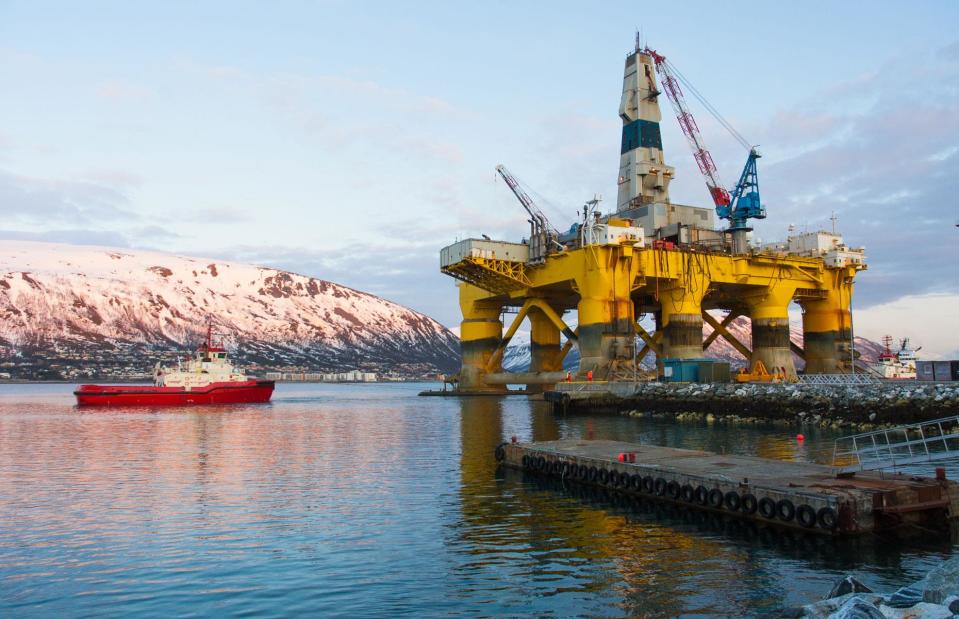
L. Belov/Shutterstock
Like the UK, Europe's leading oil-extracting nation depends on offshore reserves in the North Sea, which have been in gradual decline over the years.
Norway agreed to limit its 2020 oil production to help stabilise the market during the coronavirus pandemic. Despite this, the Scandinavian country actually upped production to just over two million barrels daily.
By 2024, the country expected to increase oil production by 19% due to the success of new developments in the industry, such as the Johan Sverdrup field which currently accounts for around a quarter of Norway's oil output. Despite this, the nation's production fell slightly from 2.025 million barrels in 2021 to 1.901 million barrels in 2022. It remains to be seen how much oil Norway produced in 2023.
11. Mexico: 1.944 million barrels per day
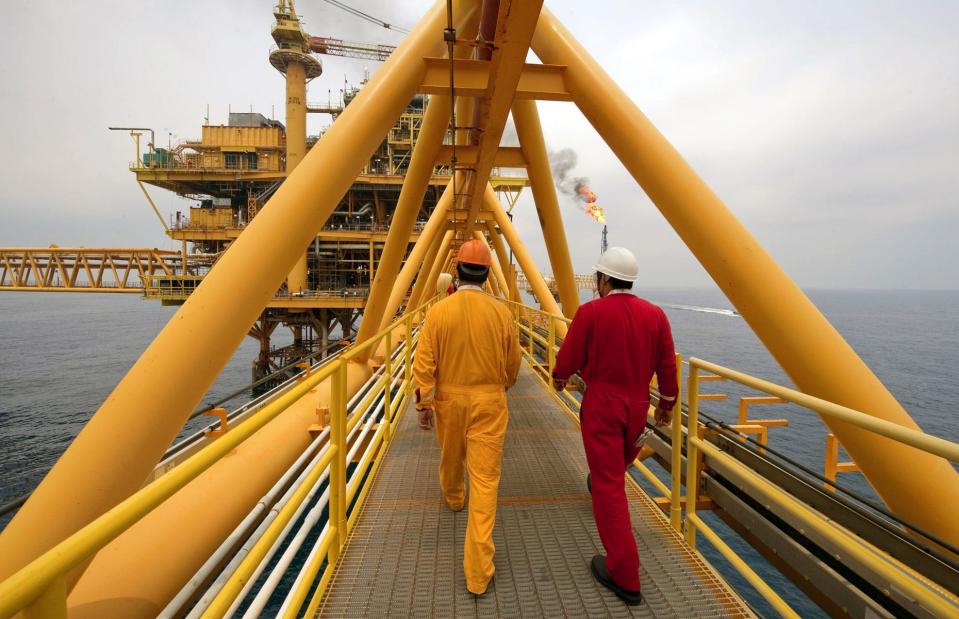
Alfredo Estrella/Getty Images
Oil production in Mexico peaked in 2003 at almost four million barrels a day, but its output has more than halved since then.
In 2019, the downward trend saw the country produce 1.921 million barrels per day, marking a drop of almost one million barrels since 2012.
During the height of the COVID-19 outbreak, Pemex, the country’s largest oil producer, announced its lowest extraction rates since 1979, with 1.91 million barrels sourced each day.
This marked the country's lowest figures in over two decades. While levels haven't yet bounced back to where they once were, production did increase to 1.928 million barrels per day in 2021 and 1.944 million in 2022.
10. Kuwait: 3.028 million barrels per day
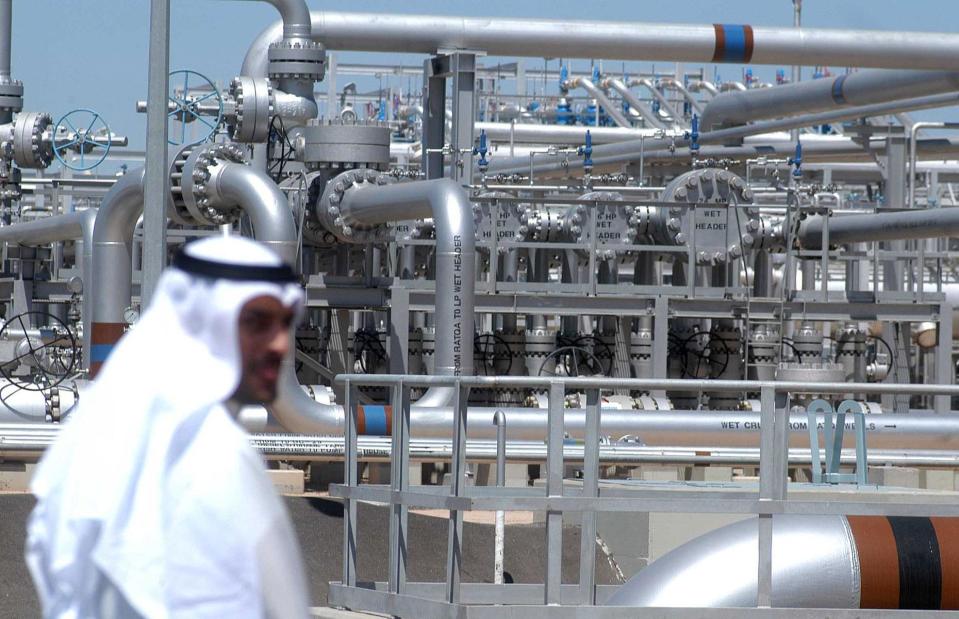
Yasser Al-Zayyat/Getty Images
Oil and gas are big business in Kuwait, accounting for over half of the country’s GDP and around 95% of its exports.
Despite being one of the more prominent OPEC members, Kuwait’s oil production has crept up in recent years, though it's yet to surpass its 2012 oil production total of more than 3.17 million barrels a day.
May 2020 saw Kuwait commit to cutting oil production, with OPEC asking the world’s biggest oil-producing nations to come together to stabilise oil prices amid the chaos caused by the pandemic.
As a result, Kuwait produced 2.695 million barrels per day in 2020, down from 2.976 million in 2019. Production ramped back up again in 2021, with its daily total increasing to 2.741 million barrels on average. This increased yet again to 3.028 million in 2022.
9. Brazil: 3.107 million barrels per day
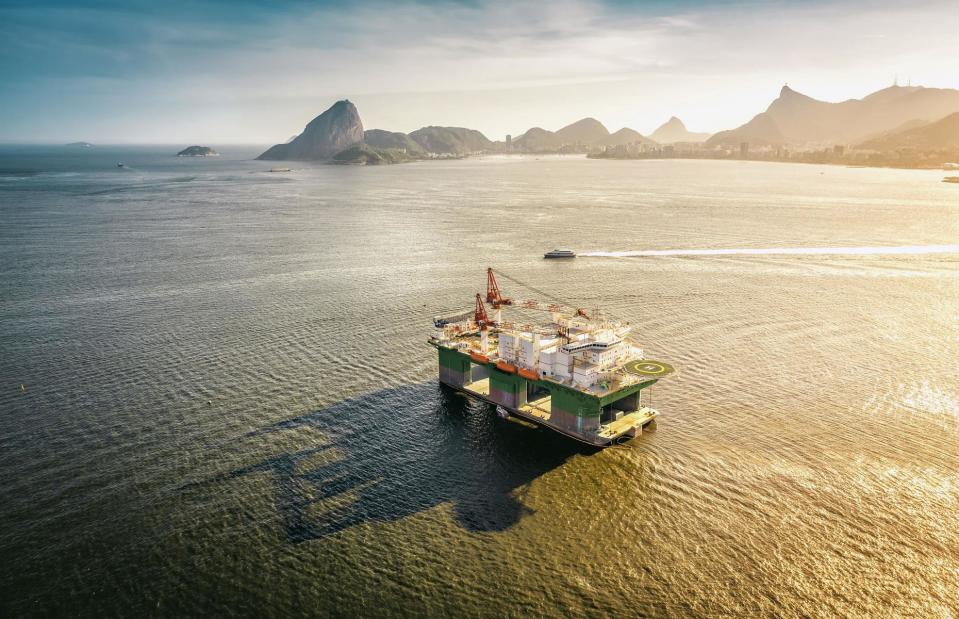
Marcello74/Shutterstock
Brazil did not agree to reduce production in 2016, unlike many of the other largest oil-producing countries. Its output actually increased from 2.691 million barrels in 2018 to 2.890 million in 2019, with enormous investments made in the industry beginning to pay off.
Not even the severe impact of COVID-19 could quell Brazil’s surging oil production, which increased to a rate of 3.03 million barrels per day in 2020. This figure dipped to 2.987 million in 2021 but rose to 3.107 million in 2022.
8. Iran: 3.822 million barrels per day
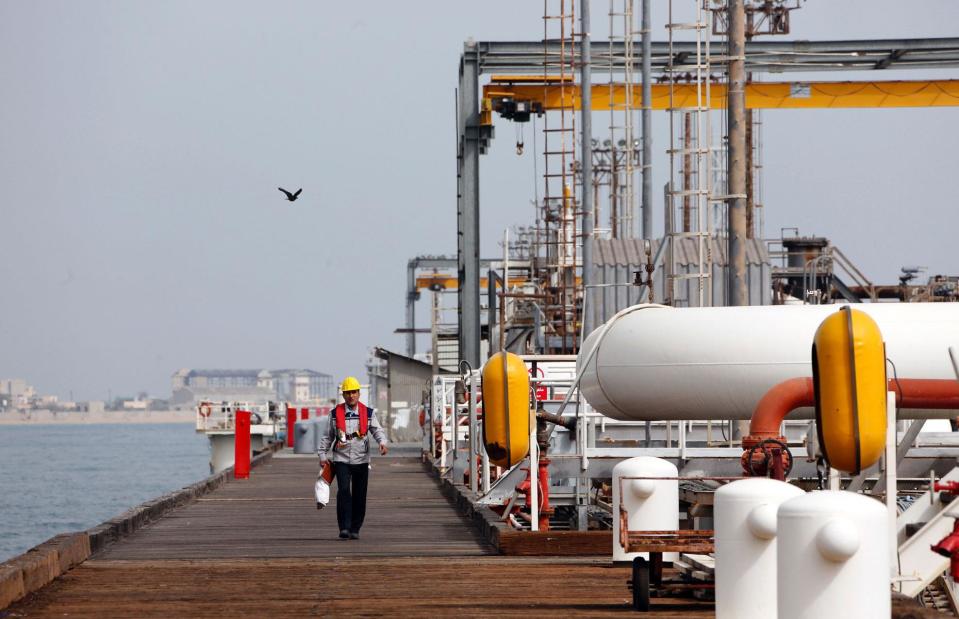
Atta Kenare/AFP/Getty Images
Back in the 1970s, Iran was considered an oil powerhouse. However, its influence in the industry has decreased as other countries have started to use their own oil reserves.
Iran's oil production and export rates have fallen further since the United States increased sanctions against the country in 2018. The following year, its oil output dropped to 3.399 million barrels a day, a drop from 4.608 million in 2018.
Fluctuating sanctions and the COVID-19 outbreak caused production to fall again, with output dropping to 3.084 million barrels in 2020.
However, this downward trend hasn't lasted, with Iran producing an average of 3.620 million barrels per day in 2021 and 3.822 million in 2022. That September, the National Iranian Oil Company announced plans to increase output to over four million barrels per day by March 2023. It's yet to be determined if that target has been reached.
7. United Arab Emirates: 4.020 million barrels per day

Lukas Holub/Shutterstock
The United Arab Emirates cut oil production in 2017 in a bid to tackle the global oversupply problem. However, its output has crept back up again.
Generally speaking, the nation's oil production has remained stable since the late 1980s. At the current rate of production and consumption, the country’s reserves should last for almost 300 years.
The UAE produced 3.999 million barrels of oil per day in 2019, although this figure dropped to 3.693 million barrels in 2020 as the elective monarchy agreed to reduce output levels from May 2020.
However, this trend hasn't continued, with the total dropping only slightly to 3.668 million barrels per day in 2021 before rising to 4.020 million barrels per day in 2022.
6. China: 4.111 million barrels per day
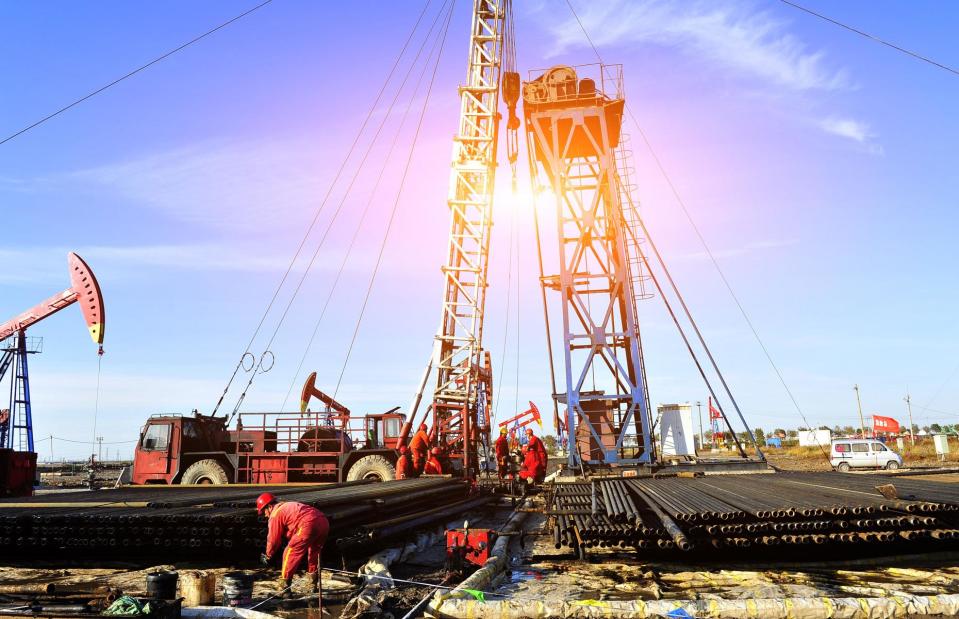
QiuJu Song/Shutterstock
China is one of the world's largest oil producers and the second-biggest consumer – one of the reasons why the oil market became so volatile when COVID-19 broke out in the country.
Until 2015, China produced more than four million barrels of oil a day. After production fell to 3.802 million barrels in 2018, there was a slight increase to 3.848 million barrels in 2019. Further slight growth saw the country produce 3.901 million barrels a day in 2020 and 3.994 million in 2021.
However, China’s status as one of the globe's top oil producers may not last much longer. It's been estimated that the People's Republic has around five years’ worth of proven reserves left, given its high production and consumption levels. Sure enough, although the nation's production rate increased by 2.9% from 3.994 million to 4.111 million barrels of oil from 2021 to 2022, The New York Times reported that China's oil and gas consumption fell in 2022 for the first time in decades (though initial reports from the Chinese state broadcaster CCTV suggest the nation's crude oil production increased in 2023).
5. Iraq: 4.520 million barrels per day
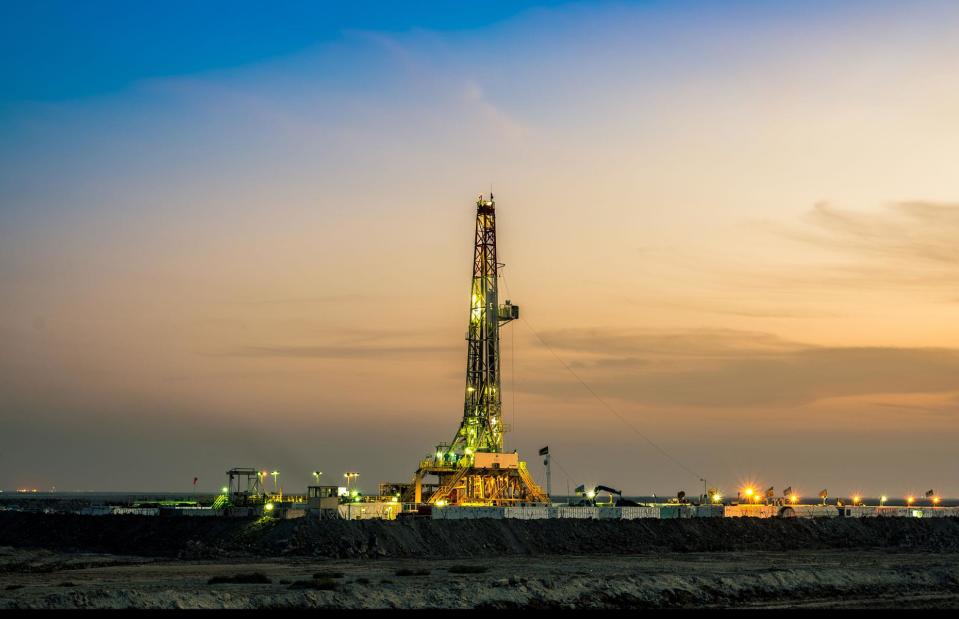
Mokhtar Alagha/Shutterstock
Iraq signed up to the OPEC agreement to cut oil production at the end of 2016 – yet the country's year-on-year output actually increased as its security situation improved and fewer supply disruptions were reported.
In 2019, its daily production hit 4.779 million barrels. Iraq again committed to reducing its output to help prevent a glut, and the country produced 4.114 million barrels per day in 2020.
In 2021, the nation's oil production rate fell even further, with Iraq producing 4.102 million barrels per day. But this number increased to 4.520 million barrels a day in 2022, fuelled partially by increased demand for non-Russian oil.
4. Canada: 5.576 million barrels per day
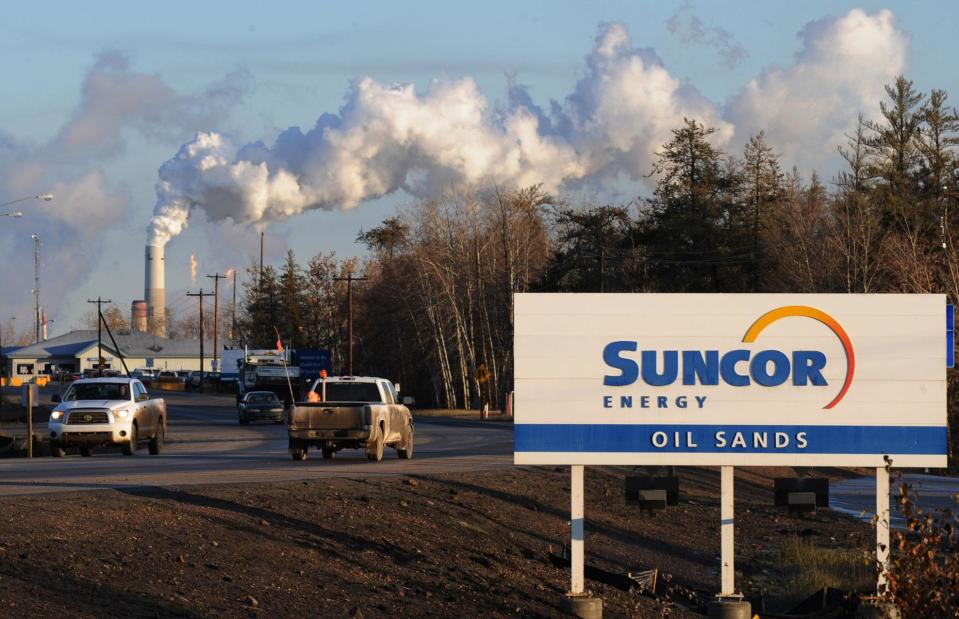
Mark Ralston/AFP/Getty Images
The rapid expansion of Canada's oil sands has been driving impressive growth in the industry. In 2018, output was up 8.9% as a number of new projects went live, and the number of barrels produced per day increased by another 2.4% in 2019 to over 5.3 million.
The North American country wasn’t immune to the effects of the COVID-19 outbreak, and production decreased to 5.135 million barrels per day in 2020. However, according to IHS Markit, the oil sands were thought to have fully recovered from the pandemic shock by June 2021.
Between 2021 and 2022, its production increased by 3% to 5.576 million barrels a day. It’s believed the country has enough oil to last more than 180 years if it continues at similar rates of consumption – but recent reports have suggested Canada's oil production might peak as early as 2026 as the world increasingly moves away from fossil fuels.
3. Russia: 11.202 million barrels per day
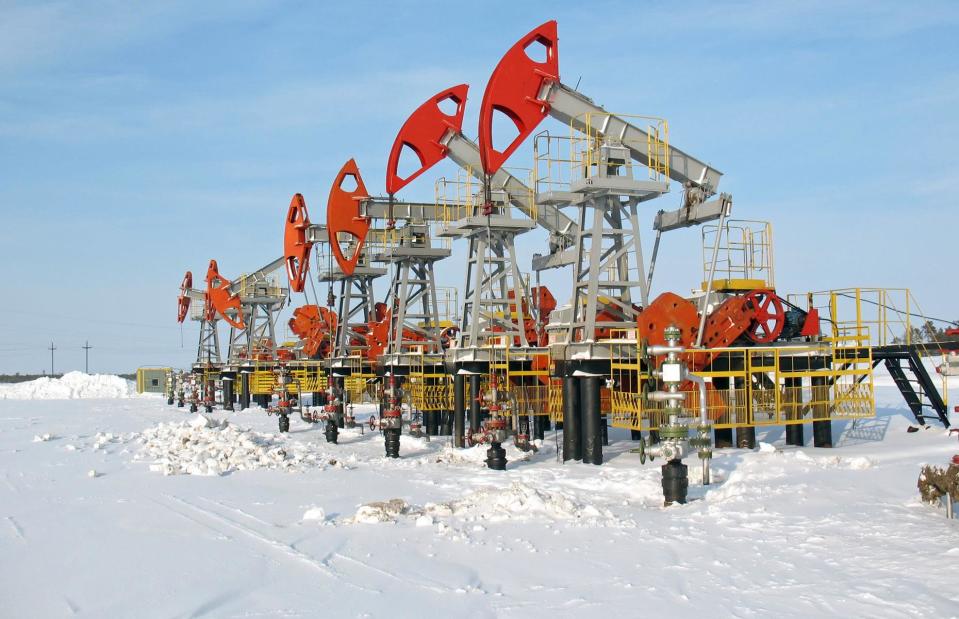
George Spade/Shutterstock
Russia joined OPEC at the end of 2016 in curbing production to boost global prices – but has struggled to comply with the agreement.
The nation's output marginally increased from 11.562 million barrels a day in 2018 to 11.679 million barrels in 2019, and only the onset of the COVID-19 pandemic prompted the country to reduce its output.
The effects of the pandemic were thought to have reduced Russia’s oil production by up to 20% at the start of 2020. Across the year, production was down 8.7% compared to 2019.
It crept back up to 10.944 million barrels a day in 2021, but amid reports the nation's oil production had plummeted by over 10% by April 2022 as a result of its invasion of Ukraine, it was widely expected that Russia's numbers would have fallen in 2022. That wasn't the case. The latest data shows the Russian Federation produced 11.202 million barrels of oil that year, with its crude oil accounting for 23% of European crude oil exports.
2. Saudi Arabia: 12.136 million barrels per day
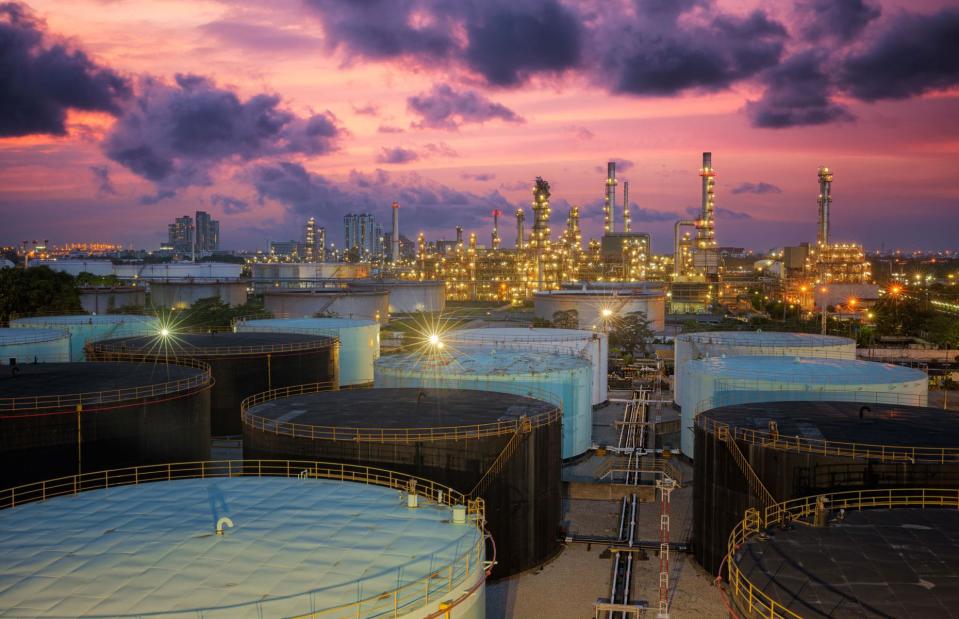
Anakoho/Shutterstock
Saudi Arabia remains the world's second-largest oil-producing country, despite the pandemic – followed by OPEC cuts in November 2022 – leading to a dip in production.
In 2018, more than 12.2 million barrels were produced daily, which fell to 11.8 million in 2019. In April 2020, Saudi Arabia slashed its production rate and volunteered to make additional cuts outside of the OPEC commitments.
As such, daily production rates fell to 11.039 million barrels in 2020. The figure fell further to 10.954 million in 2021 but rose to a four-year high of 12.136 million in 2022.
1. United States: 17.770 million barrels per day
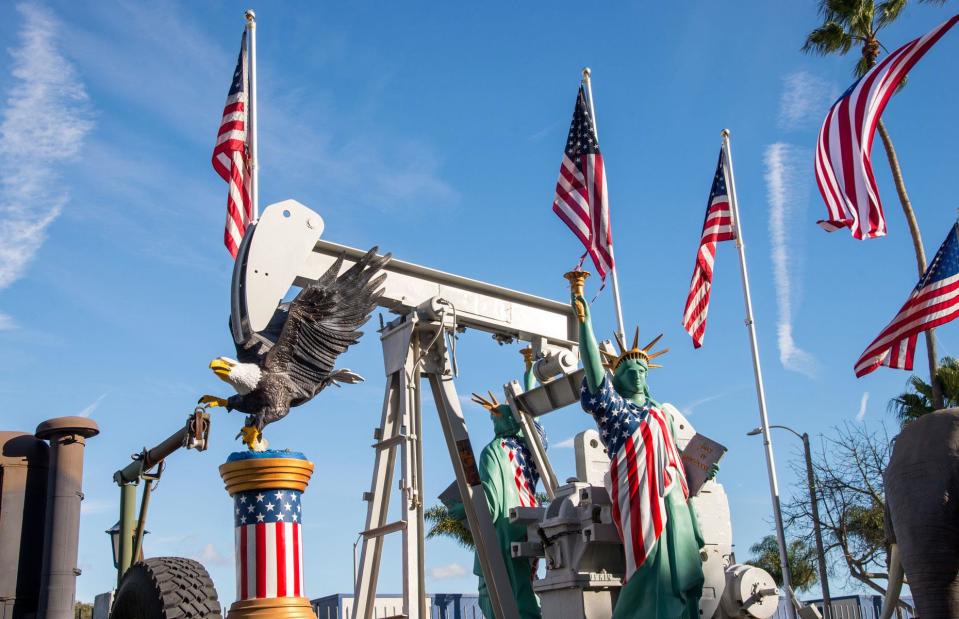
Steve Bruckmann/Shutterstock
The United States has ruled the roost since 2017 when it comes to producing oil. More than half (32) of the country's states contribute to its total output, with more than 40% drilled in Texas. The US has been particularly industrious in extracting oil and was the first nation to adopt methods that allow rigs to drill horizontally, which could account for its increasingly high yields.
In 2019, 17.114 million barrels were produced every day, marking a rise of more than 10% from 2018. Production dropped to 16.458 million barrels in 2020. The following year, American oil production didn't just have the lingering effects of the pandemic to contend with – there was also the catastrophic impact of the big freeze that had chilled the country, with Texas hit particularly hard.
Despite the turbulence, US oil production recovered to 16.585 million barrels in 2021 and a staggering 17.770 million in 2022. With rates so much higher than any other country, America will likely keep its top spot for some time, especially as it's ramped up output levels to compensate for the West's boycott of Russian energy.
Now discover which countries are using the most renewable energy

 Yahoo Finance
Yahoo Finance 